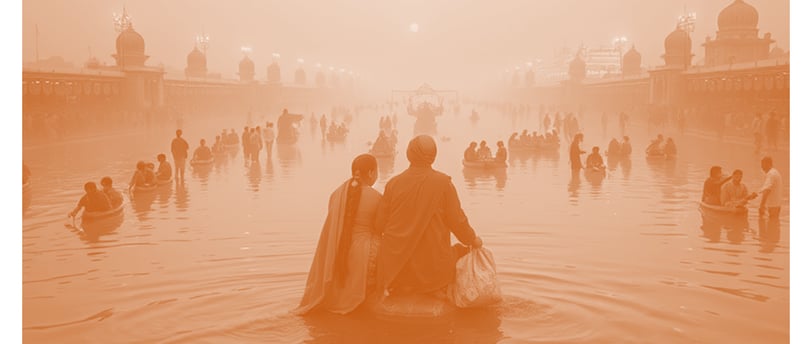Mahakumbh: The Grand Spiritual Gathering
CULTURE


Mahakumbh: The Grand Spiritual Gathering
## Introduction
Mahakumbh, the largest spiritual and religious congregation in the world, is an event of immense significance for Hindus. Held once every twelve years, it attracts millions of pilgrims, saints, ascetics, and tourists from all over the world. It is an occasion of faith, devotion, and cultural heritage, where devotees gather to take a holy dip in sacred rivers, seeking spiritual purification and salvation.
## Historical and Mythological Significance
The origins of Mahakumbh are deeply rooted in Hindu mythology. According to legend, the event is associated with the Samudra Manthan, the churning of the ocean by gods and demons in search of the divine nectar of immortality, known as Amrit. As the story goes, a fierce battle ensued between the gods (Devas) and the demons (Asuras) over the possession of Amrit, during which a few drops of the nectar fell at four sacred locations: Prayagraj, Haridwar, Ujjain, and Nashik. These sites have since become the venues for the Kumbh Mela celebrations.
## The Four Kumbh Melas
1. Prayagraj (Allahabad) - The most significant and grandest of all Kumbh Melas, held at the confluence of the Ganga, Yamuna, and the mythical Saraswati rivers.
2. Haridwar - Located on the banks of the holy Ganges, this Kumbh Mela is particularly known for its spiritual energy and religious rituals.
3. Ujjain - Celebrated on the banks of the Shipra River, this event has a strong association with Lord Shiva and the temple of Mahakaleshwar.
4. Nashik - Held on the banks of the Godavari River, this Mela is known for its vibrant processions and ascetic gatherings.
Each location hosts the Mahakumbh Mela every 12 years, with the Ardh Kumbh occurring every six years and the smaller Magh Mela (Annual Kumbh) celebrated every year at Prayagraj.
## The Rituals and Traditions of Mahakumbh
### 1. The Sacred Bath (Shahi Snan)
The most significant ritual of Mahakumbh is the holy dip in the sacred river. Devotees believe that bathing in these rivers during the Kumbh Mela washes away sins and liberates them from the cycle of rebirth.
### 2. Processions of Akharas
The event is marked by grand processions of various Akharas (monastic orders of Hindu ascetics). Naga Sadhus, known for their austere lifestyles and renunciation, are among the most prominent participants, marching in large numbers to take the first dip in the river.
### 3. Religious Discourses and Spiritual Debates
Mahakumbh serves as a platform for scholars, saints, and spiritual leaders to engage in religious discussions and philosophical debates. These discourses attract devotees who seek guidance on spiritual matters.
### 4. Aarti and Devotional Activities
During Mahakumbh, mesmerizing Ganga Aartis are performed at the riverbanks, creating an enchanting atmosphere. Devotional singing, meditation sessions, and Yagyas (fire sacrifices) are common throughout the festival.
## The Spiritual and Cultural Impact
Mahakumbh is not just a religious event; it is a cultural and social phenomenon that brings together people from all walks of life. It fosters unity, instills moral values, and promotes Hindu traditions and teachings. The Mela showcases India’s rich heritage, attracting international tourists and scholars who wish to study its spiritual depth.
## Modern Management and Arrangements
Given the massive influx of devotees, elaborate arrangements are made by the government and local authorities. Temporary cities with tent accommodations, sanitation facilities, medical centers, and security measures are set up to ensure smooth conduct. The use of technology, such as digital mapping and surveillance systems, plays a crucial role in managing the crowd.
## Environmental Considerations
With such a large congregation, environmental concerns such as waste management, river pollution, and overcrowding are inevitable. Efforts are being made to promote eco-friendly practices, including waste segregation, biodegradable materials, and campaigns to keep the rivers clean.
## Conclusion
Mahakumbh is an unparalleled event that reflects the essence of Indian spirituality, faith, and tradition. It is a testament to the enduring cultural and religious values that have been passed down through generations. For devotees, it is an opportunity for divine connection and self-purification, making it one of the most awaited spiritual events in the world.
